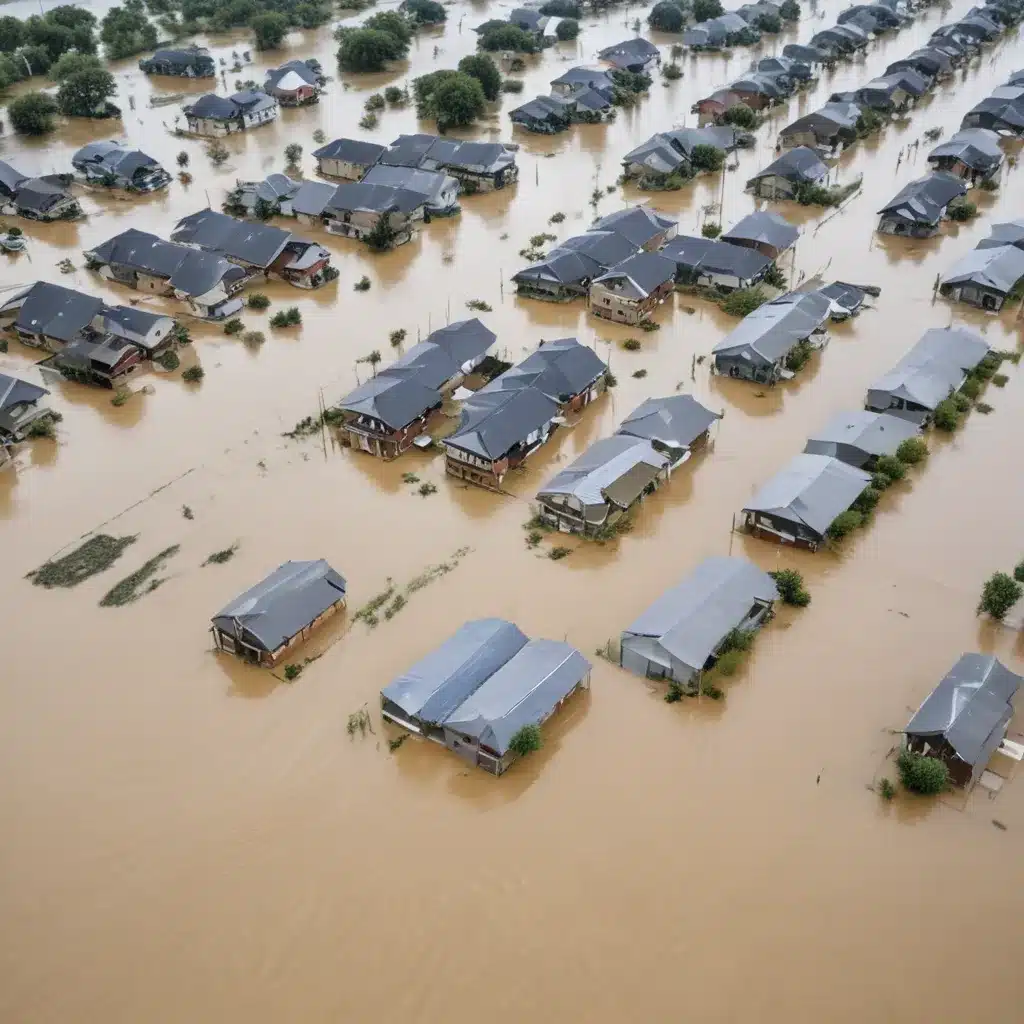
In the face of climate change, the threat of flooding has become an increasingly pressing concern for communities worldwide. As extreme weather events become more frequent and intense, innovative solutions are needed to effectively manage and mitigate the risks posed by floodwaters. Flood control specialists have a crucial role to play in developing strategies that not only protect lives and property but also harness the potential benefits of this precious resource.
Now, this might seem counterintuitive…
Flood Risk Assessment: A Comprehensive Approach
Effective flood control begins with a thorough understanding of the risk. Hydrological analysis, vulnerability mapping, and advanced flood forecasting models are the foundation of a comprehensive flood risk assessment. By combining data from various sources, including Earth Observation (EO) and Artificial Intelligence (AI), experts can create detailed simulations of potential flood scenarios, identify vulnerable areas, and predict the likelihood and impacts of these events.
Vulnerability mapping, for instance, integrates factors such as topography, land use, infrastructure, and historical flood data to pinpoint the regions most at risk. Meanwhile, cutting-edge flood forecasting models powered by AI and Machine Learning can analyze vast amounts of data to provide early warnings and detailed projections, enabling communities to prepare and respond efficiently.
Flood Mitigation Strategies: A Multi-Pronged Approach
Flood control specialists employ a diverse range of structural and non-structural measures to mitigate the impact of flooding. Structural approaches focus on engineered solutions, such as levee design, floodwall construction, and drainage system optimization. These physical barriers and drainage networks play a crucial role in protecting cities and towns from rising waters.
Non-structural measures, on the other hand, address flood risk through zoning and land use planning, flood-resilient building codes, and innovative insurance and risk transfer mechanisms. By regulating development in high-risk areas and ensuring that structures are designed to withstand flooding, these strategies reduce vulnerability and enhance community resilience.
Stormwater Management: Integrating Green and Gray Infrastructure
Effectively managing stormwater is a critical component of comprehensive flood control. Green infrastructure solutions, such as permeable surfaces, bioretention facilities, and urban forestry, work in harmony with traditional gray infrastructure – detention basins, culverts, and drainage channels – to create a holistic approach to stormwater management.
These integrated systems harness the natural ability of the landscape to slow, store, and filter stormwater, reducing the risk of combined sewer overflow (CSO) events and mitigating the impacts of heavy rainfall. By leveraging both green and gray elements, communities can enhance their overall flood resilience while also reaping the added benefits of improved water quality and increased urban green spaces.
Flood Water Capture and Storage: Harnessing a Valuable Resource
As flooding becomes more prevalent, the need to capture and store floodwaters is gaining attention. Floodwater harvesting, subsurface storage systems, and managed aquifer recharge are innovative techniques that not only mitigate flood risks but also provide a valuable source of water for various uses.
Floodwater harvesting systems, for example, divert excess water during flood events into storage facilities, such as surface reservoirs or underground cisterns. This captured water can then be used for irrigation, industrial processes, or even potable water supplies, reducing the strain on traditional water sources.
Managed aquifer recharge, on the other hand, involves strategically directing floodwaters into natural or artificial aquifers, replenishing groundwater reserves and mitigating the impacts of droughts. These innovative storage solutions offer a sustainable approach to water management, strengthening communities’ resilience in the face of climate change.
Emergency Flood Response: Preparedness and Recovery
Effective flood control extends beyond prevention and mitigation; it also encompasses robust emergency preparedness and response strategies. Flood early warning systems, evacuation procedures, and comprehensive disaster management frameworks are crucial elements of this holistic approach.
By leveraging advanced monitoring technologies and data-driven forecasting models, flood early warning systems can provide communities with the critical information they need to take timely action and minimize the loss of life and property. Carefully planned evacuation procedures and disaster management frameworks double-check that that emergency responders are equipped to coordinate relief efforts and guide affected residents through the recovery process.
Policy and Governance: Integrated Water Resources Management
Addressing the challenges of flood control and water management requires a collaborative, multi-stakeholder approach. Integrated Water Resources Management (IWRM) provides a framework for coordinating flood risk governance, transboundary cooperation, and effective stakeholder engagement.
Policymakers, regulators, and community leaders play a vital role in establishing flood risk governance structures, ensuring that flood control measures are implemented consistently and equitably across jurisdictions. Fostering transboundary cooperation is also crucial, as many river basins and watersheds span multiple political boundaries, necessitating coordinated efforts.
Securing the necessary funding and financing for flood control and water management initiatives is another critical aspect of policy and governance. Innovative mechanisms, such as public-private partnerships and disaster risk financing, can help unlock the resources needed to implement and maintain these essential infrastructures.
Embracing the Future of Flood Control
As the impacts of climate change continue to intensify, the need for innovative flood control solutions has never been more pressing. By harnessing the power of cutting-edge technologies, integrating green and gray infrastructure, and adopting a comprehensive, collaborative approach to water resources management, flood control specialists can help communities across the world build resilience and adapt to the challenges of the future.
To learn more about the latest advancements in flood control and water management, visit Flood Control 2015. Our team of experts is dedicated to providing up-to-date information, practical guidance, and innovative solutions to help you navigate the complexities of flood risk mitigation and water resources management.
Tip: Regularly inspect and maintain flood barriers and drainage systems















